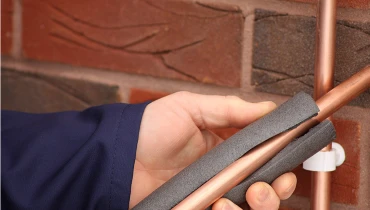Schedule a Plumber This Thursday to Get 50$ OFF
Schedule a Plumber This Thursday to Get 50$ OFF

Outdoor water pipes are exposed to the elements and can be vulnerable to extreme temperatures, making them susceptible to freezing in cold weather. A burst pipe can lead to extensive damage and costly repairs, often necessitating the assistance of a plumber or a plumbing service for pipe repair or even repiping. To avoid such scenarios, it's crucial to insulate outdoor water pipes effectively.
Insulating outdoor water pipes serves two essential purposes:
Insulating outdoor water pipes is a preventive measure that can save you from costly plumbing emergencies and enhance the energy efficiency of your water system. Burst pipes due to freezing can lead to extensive water damage, necessitating the services of a plumber for pipe repair or repiping. Proper insulation ensures that your water supply remains uninterrupted, even in the harshest weather conditions. If you're unsure about the insulation process or want to ensure your entire plumbing system is prepared for winter, it's advisable to consult Mr. Rooter Plumbing. They can inspect your plumbing, identify vulnerable areas, and provide expert guidance on insulation and other protective measures, ultimately safeguarding your home from the risks associated with outdoor water pipes in cold weather.
Most homeowners don’t think about the importance of a shower until they face a problem with it. A minor problem in the shower can quickly escalate into a major headache.…
Most homeowners don’t think about their toilet until there is a problem with it. Toilets are durable systems meant to last for years, but like any household fixture, they aren’t…
There is nothing more annoying than turning on your sink with the expectation of a steady stream of water and only seeing a weak flow instead. Whether you’re trying to…